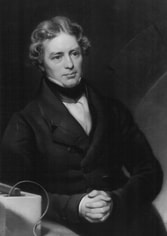|
Short on time? Need a quick review? This video provides a a quick summary otherwise, continue on... |
|

In previous lesson we learnt about Magnetic Flux.
In 1831, Michael Faraday discovered that if a conductor experience a rate of change of flux, an Electromotive Force (EMF) would be produced, which in turn would lead to a induced current in a closed circuit.
EMF is not actually a force and we now know it as a voltage.
Interactive
Before we look at the theory, play with animation below.
See what affects the amount of current induced, which determines the brightness of the bulb.
In 1831, Michael Faraday discovered that if a conductor experience a rate of change of flux, an Electromotive Force (EMF) would be produced, which in turn would lead to a induced current in a closed circuit.
EMF is not actually a force and we now know it as a voltage.
Interactive
Before we look at the theory, play with animation below.
See what affects the amount of current induced, which determines the brightness of the bulb.
Theory
We will now look at the theory behind Faraday's Law.
First look at this video. In one of my first ever videos, I review flux and then discuss how that lead into a EMF being induced
We will now look at the theory behind Faraday's Law.
First look at this video. In one of my first ever videos, I review flux and then discuss how that lead into a EMF being induced
This second video discusses Faraday's Law as well, but here I use a demonstration with two coils to do so
Check your understanding

